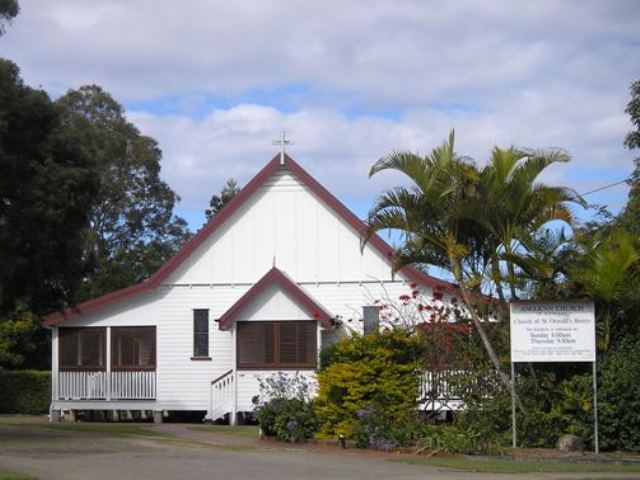Addresses
Type of place
Church, Hall
Period
Interwar 1919-1939, Postwar 1945-1960
Style
Carpenter Gothic
Addresses
Type of place
Church, Hall
Period
Interwar 1919-1939, Postwar 1945-1960
Style
Carpenter Gothic
This timber interwar Anglican church was opened in 1929, eleven years after the land was purchased for the purpose of providing the Nundah/Banyo parish with a hall. Designed by local architect W.C. Nicholls, the church was extended in 1954 and became a separate parish to Nundah in 1974. A hall was also opened on the site in 1946. The church has continued to serve the local community’s spiritual needs since the 1920s. A 1975 presbytery on the site is not included in the heritage listing.
Lot plan
L20_RP885443
Key dates
Local Heritage Place Since —
Date of Citation —
People/associations
W.C. Nicholls (Architect)Criterion for listing
(A) Historical; (G) SocialInteractive mapping
Lot plan
L20_RP885443
Key dates
Local Heritage Place Since —
Date of Citation —
People/associations
W.C. Nicholls (Architect)Criterion for listing
(A) Historical; (G) SocialInteractive mapping
History
In 1918, members of the Anglican faith in the Banyo/Nudgee district raised ₤140 towards the purchase of a large block of land in Victoria (now Froude) Street at Banyo. The block’s sale price was ₤240 so the remainder of the money was obtained through a loan from the Anglican Archdiocese Council. Unfortunately there was no money available to build a church on this land. Thus Anglican Church services were held at parishioner’s houses from 22 February to 1 August 1920. Then people attended the Nundah church until 1925, when, with the completion of the Banyo Memorial Hall, church services returned to the district.
The Banyo area was first settled and farmed by Europeans in the 1840s but was known as Clapham Junction until it was officially named Banyo until 1898. The Sandgate railway line went through Banyo from 1885 but a platform was not established until 1912. The area remained semi-rural until World War II.
Through the sale of two of the allotments purchased in 1918, enough funds were raised to commence the building of a church hall in 1928. Dean Francis de Witt Batty conducted the stump-capping ceremony on 1 December 1928. A local architect Mr. W.C. Nicholls designed the church and his plan was for a building 30 feet x 24 feet that could seat 100 parishioners. The church was situated on the side of the one acre site to facilitate constructing additional buildings if needed at a later date. The parishioners from St Francis Church at Nundah donated the church organ and a 12 inch bell. Local volunteers painted the church and supplied the internal furnishings. The cost of the building was £465. The Anglican Archbishop of Brisbane, Gerald Sharp officially opened St Oswald’s Church, on 17 February 1929 in the presence of some two hundred people.
As the proposed hall had become a church, all Anglican socials such as fetes and dances were held either in the church grounds or down at the Memorial Hall. As a result, a decision was made in 1945 to erect a church hall next to St Oswald’s Church. Bishop Horace Dixon conducted the stump-capping ceremony on 16 February 1946. Mr. J. Thorngaard built the hall and it was officially opened on 4 September 1946. From April 1947, the local Methodist congregation made use of the hall for services on the second and third Sunday of every month.
In 1954 the builder J.W. Whiting added extensions to St Oswald’s Church. St Oswald’s Church finally became a separate parish to Nundah on 2 June 1974. As a result a priest was based there to service the new Banyo/Northgate parish. Hatchman Brothers built a presbytery on the site in 1975. The cost of this residence was $25,437.
Statement of significance
Relevant assessment criteria
This is a place of local heritage significance and meets one or more of the local heritage criteria under the Heritage planning scheme policy of the Brisbane City Plan 2014. It is significant because:
References
-
Bangee Festival, Banyo Nudgee Heritage Trail, (Brisbane: Bangee, 2000)
-
BCC building cards
-
Brisbane Courier. Monday 18 Feb 1929
-
Ourbrisbane.com website. History of Brisbane’s Banyo. Viewed 25 Nov 2010. http://www.ourbrisbane.com/suburbs/banyo/history
Citation prepared by — Brisbane City Council (page revised June 2022)

